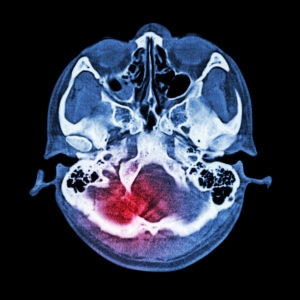
Did Your Child Suffer Injuries from HIE? Hire a Birth Injury Lawyer in St. Paul Now
For new parents, anticipating a baby is one of life’s greatest joys. But learning your child has suffered a birth injury, especially if your physician
Klumpke’s palsy is a type of brachial plexus birth injury which could be caused by Oregon medical malpractice. Brachial plexus injuries are due to damage to the nerves which originate at the spine and extend through the base of the neck, through the armpit, and down the arm extending to the fingertips. There are many possible causes for brachial plexus injuries, but in newborns a brachial plexus injury such as Klumpke’s palsy is likely due to medical malpractice. Thus, whenever a child is diagnosed with any type of arm nerve injury such as a brachial plexus injury, families should seek Oregon Klumpke’s palsy lawyers to review their case.
This is because Klumpke’s palsy and other brachial plexus injuries are usually preventable. Meaning that when a brachial plexus birth injuries occurs, it may be due to the fact that a healthcare provider has failed to provide the appropriate care and treatment necessary to a newborn. As a result, a victim and his or her family may be entitled to compensation for pain and suffering, medical procedures, medications, and other future expenses.
What is Klumpke’s Palsy?
Like all brachial plexus injuries, Klumpke’s palsy is damage to the nerves which originate from the spinal cord and extend down the arm to the fingers. Klumpke’s palsy, or Klumpke’s paralysis, is damage to the nerves which govern the lower half of the arm which include the hand and fingers. Generally, Klumpke’s palsy is a weakness or loss of strength in the hand or fingers. It may come with some loss of sensation and function, including complete numbness. This means that the hand and forearm may suffer the most.
Many instances of Klumpke’s palsy also result in physical deformities to the hand and hand muscles. Sometimes this is known as a “claw hand,” which is the flexed position of the arm. In other instances, there may be some weakness in the upper shoulder muscles, but that is not always the case and it is always secondary to lower arm disability.
While some instances of Klumpke’s palsy could be temporary, unfortunately there is usually some permanent aspect. Meaning in one way or another, the nerve damage will result in some marked loss of strength, sensation, movement, or other function. In other instances which are usually more severe, Klumpke’s palsy is permanent.
Treatment for Klumpke’s Palsy: Understanding Classifications of Brachial Plexus Injuries and What Can be Done
Treatment for any brachial plexus injury is related to the extent of the damage. Generally speaking, there are four classifications of brachial plexus damage. They are the following:
Avulsion – When the nerve is completely torn from the spinal cord, usually resulting in permanent and nearly irreparable harm. This is the worst type of injury because the nerve is torn away at the root making it very difficult to repair, especially in babies who have very small structures to begin with.
Rupture – When the nerve is torn, cut, or otherwise severed, this is a rupture injury. This is different than an avulsion in that the root of the nerve is still connected to the spinal cord, but somewhere down the here route is damaged.
Neuroma – Direct damage to the nerve itself can cause a neuroma. Through the normal healing process, the damaged area of the nerve could begin to form painful scar tissue. This could both impair the function of the nerve or result in a constant pain or discomfort.
Neuropraxia – This is the mildest injury which occurs when the fatty, protective sheath over the nerve, known as the myelin, is damaged. This damage could result in weakened strength or sensation, as well as some discomfort.
Treatment and Prognosis for Klumpke’s Palsy Based on Classification of Injury
The primary treatment for Klumpke’s palsy is dependent on the location of the injury and the severity of the injury. For instance, an avulsion injury will need to be treated alone the cervical spine, which is the vertebrae in your neck. A rupture would need to be treated at the site of the tear, which in a brachial plexus birth injury is likely at the armpit or in the area between the neck and shoulder. Similarly, a neuroma may need to be treated at the site of the scar tissue formation.
However, neuromas do not usually need surgical intervention unless they are causing complications, which include severe pain or discomfort. The same is true for a neuropraxia, which usually heals on its own unless there is some other pathology causing complications. Injections for pain and swelling may also help. This includes cortisone shots in the shoulder or nerve blocks in the interscalene groove which is at the base of your neck.
Although surgery seems more logical, sometimes nerve injuries do not respond well to surgery or the risks of the surgery far outweigh the benefits. This is particularly true in situations where the damage is extensive or near other vital structures. In these instances, occupational therapy and physical therapy may be used to help build strength and force connections to work again. The use of nerves could help heal damage to it, particularly in forms of neuropraxia or neuromas.
Bend/Portland, Oregon Klumpke’s Palsy Lawyers
If you or a loved one have been seriously injured or killed as a result of medical malpractice contact the Oregon Medical Malpractice Lawyers at Kuhlman Law at our number below or fill out the intake form. We offer a free initial case evaluation and handle cases on a contingency fee which means that you pay no money unless we recover.
We handle cases throughout the state including Bend and Portland Oregon, Redmond, Central Oregon, Multnomah County, Deschutes County, Salem, Eugene, Corvallis, Lane County, Medford, Gresham, Albany, Medford, Beaverton, Umatilla, Pendleton, and Hillsboro.
We also have an office in Minneapolis, Minnesota and take medical malpractice cases throughout the Twin Cities, including St. Paul, Hennepin County, Ramsey County, Dakota County, Washington County, Anoka County, Scott County, Blaine, Stillwater, and Saint Paul Minnesota.
Please act quickly, there is a limited time (Statute of Limitations) in which you can bring a claim under the law.

For new parents, anticipating a baby is one of life’s greatest joys. But learning your child has suffered a birth injury, especially if your physician

Portland Medical Malpractice Lawyer Answers Can I Sue for Cerebral Palsy in Oregon Although no parent ever anticipates experiencing a catastrophic event during the birth

As patients in Minnesota, we put great trust in our medical professionals, and with good reason. Our healthcare system is one of the finest in

As a parent, there is little more devastating than finding out your child has suffered a brain injury. You’re experiencing various emotions – sadness, anger,

Portland Medical Malpractice Lawyer Explains Failure to Treat a Stroke in Oregon A Portland medical malpractice lawyer can help you handle many different types of

You had complete faith and trust in your care team during your pregnancy and delivery, but now, you’re not so sure. Your baby has been